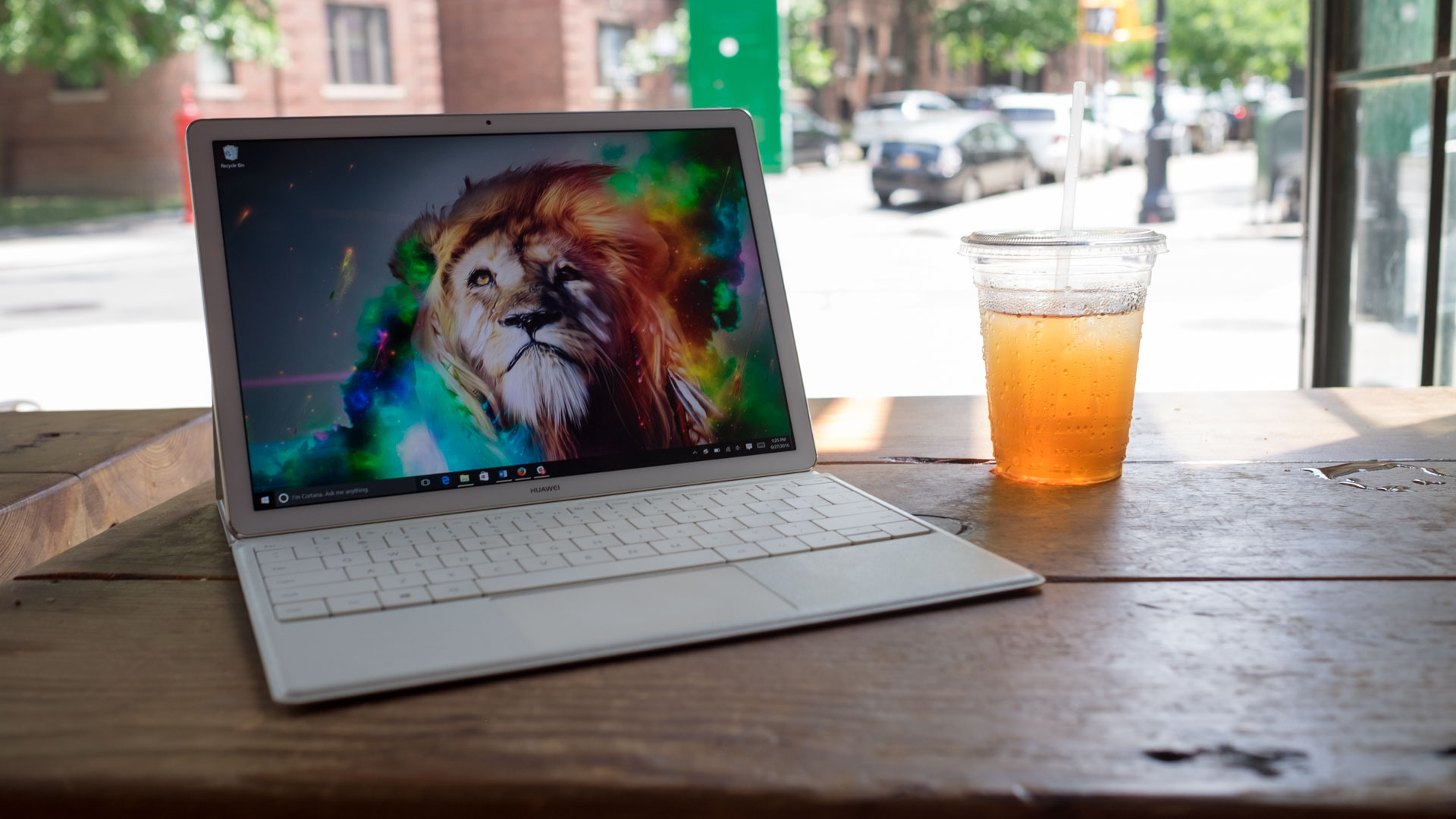Why you can trust TechRadar
On top of the higher-end exterior, the MateBook includes impressive specs including an Intel Core m7 processor and 512GB SSD putting it far above other super slim Windows 10 slates. Huawei also includes a 2,160 x 1,440 pixel-resolution screen as the standard display while other tablets stick with Full HD displays.
The base configuration also comes outfitted with Intel Core m3 CPU, 4GB of memory and 128GB SSD for $699 or £749 (about AU$940). The configuration listed below is the mid-range system and it comes priced at $849 or £999 (about AU$1,105).
Lastly, the highest-end system will set you back $1,199 (about £762, AU$1,500) for 8GB of RAM, 512GB of storage and an Intel Core m7 processor.
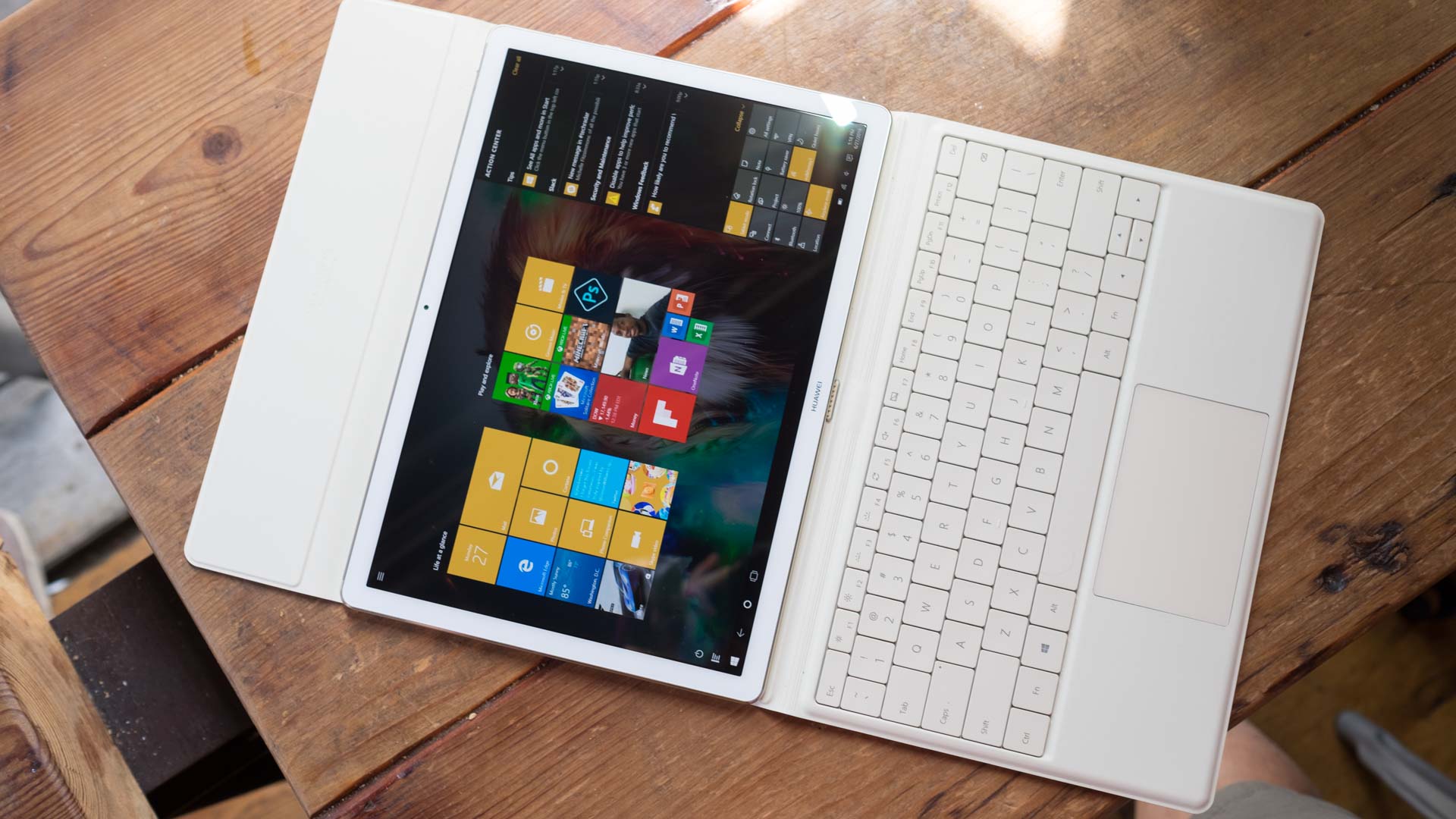
Unfortunately, none of these configurations include the keyboard or pen, so you'll have to pick them up separately for $129 (about £87, AU$172) and $59 (about £40, AU$79), respectively.
Altogether, the Huawei MateBook comes out to being more affordable than the Samsung Galaxy TabPro S even with the price of the separate accessories. That said, if you're looking for the best deal, you can pick up the HP Spectre x2 with an included keyboard and nearly the same specs for $799 (£799).
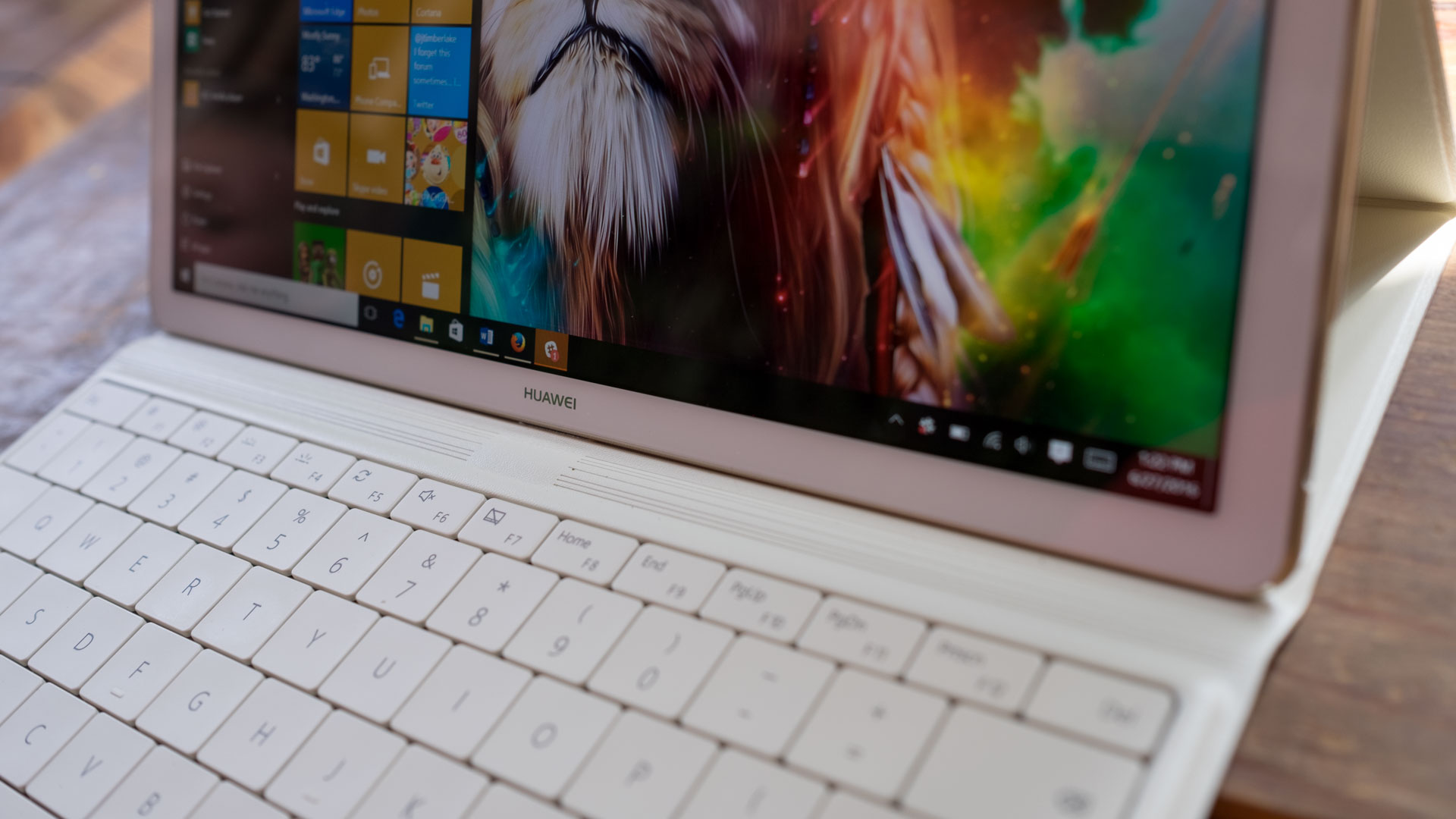
Spec Sheet
Here is the Huawei MateBook configuration sent to TechRadar for review:
- CPU: 1.1GHz Intel Core m5-6Y54 (dual-core, 4MB cache, up to 2.7GHz with Turbo Boost)
- Graphics: Intel HD Graphics 515
- RAM: 8GB LPDDR3
- Screen: 12-inch 2160 x 1440 IPS TFT touchscreen
- Storage: 128GB SSD
- Ports: USC-C (ThunderBolt 3), headset jack
- Connectivity: Wi-Fi 802.11ac MIMO, Bluetooth 4.1
- Camera: 5MP front-facing camera
- Weight: 1.41 pounds (0.64kg)
- Size: 10.98 x 7.64 x 0.27 inches (W x D x H) (27.88 x 19.41 x 0.69cm)
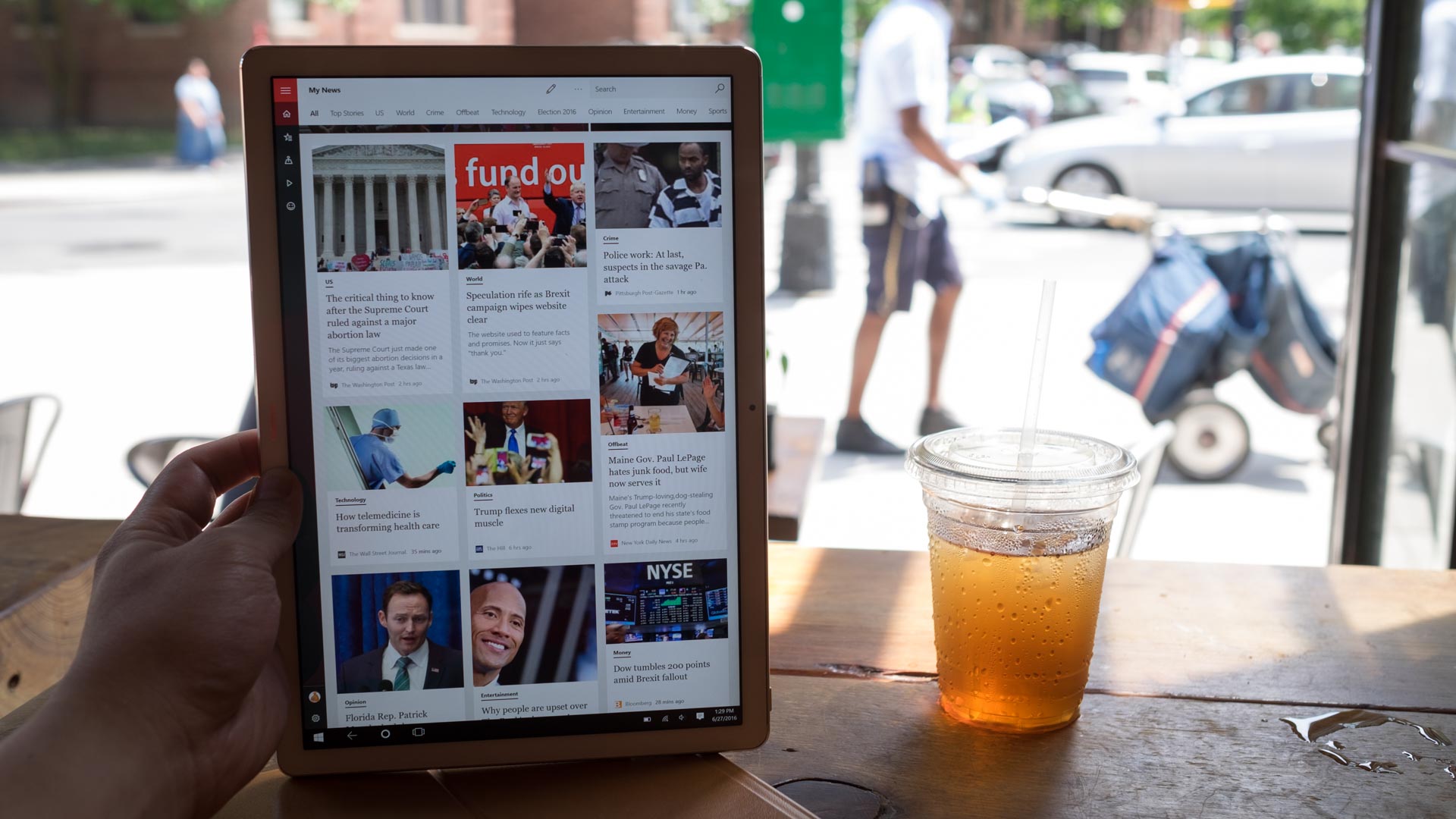
Performance
Don't let the MateBook's slender form fool you, as this Windows 10 tablet is quite a beast. The Intel Core m5 processor more than served my daily web browsing and YouTube streaming needs. Additionally, it coped well with more strenuous usage including playing rounds of Hearthstone and heavy multitasking with 10 programs running simultaneously.
The only small consequence of pushing the Huawei tablet is it can get a touch hot especially if you're holding it in your hands. It doesn't warm up enough to sear your fingers and thankfully the keyboard base helps keep the entire aluminum frame off your legs.
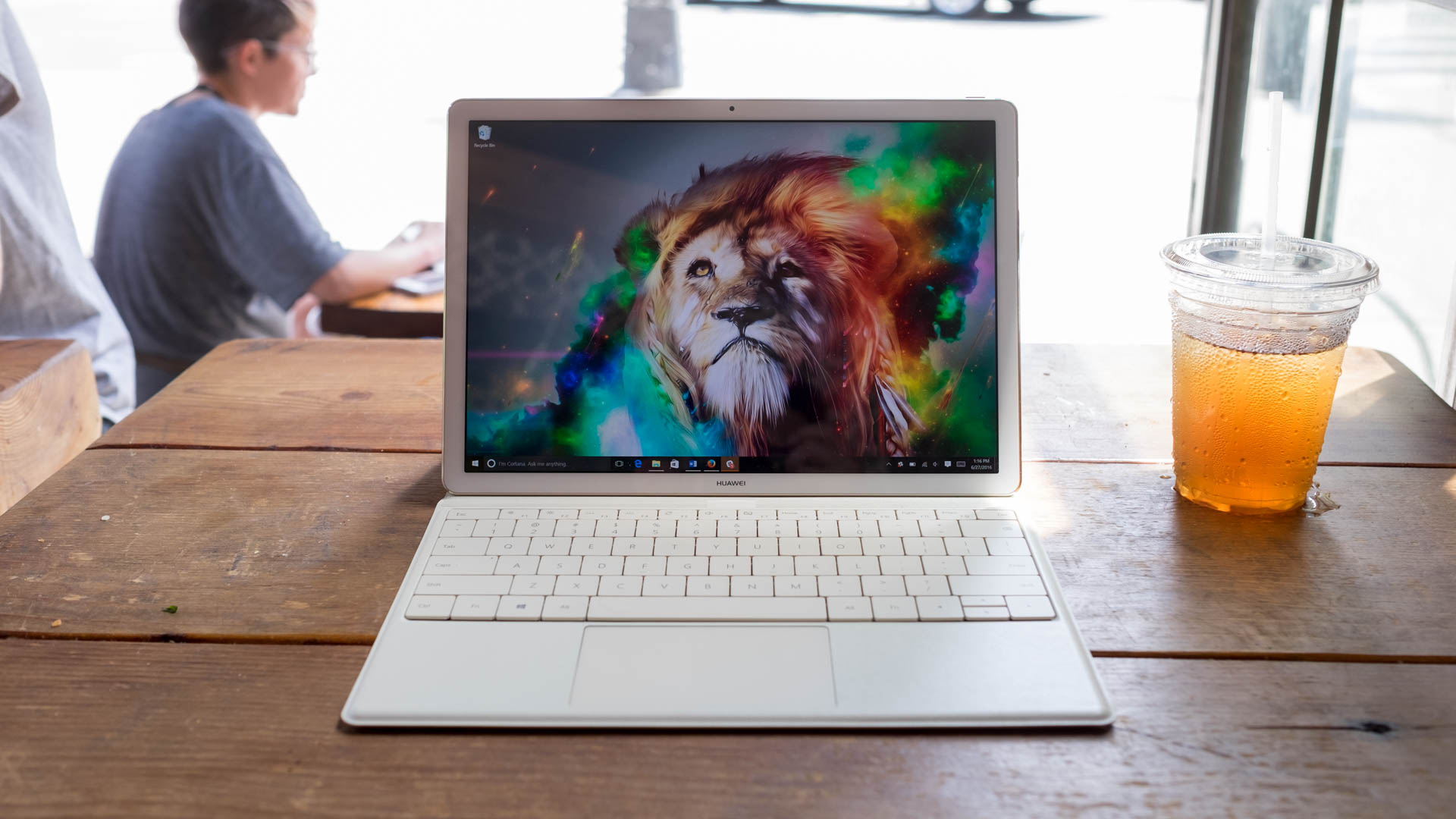
Benchmarks
Here's how the Huawei MateBook performed in our suite of benchmark tests:
- 3DMark: Cloud Gate: 4,421; Sky Diver: 1,716; Fire Strike: 483
- Cinebench CPU: 162 points; Graphics: 19.12 fps
- GeekBench: GeekBench: 1,935 (single-core); 3,967 (multi-core)
- PCMark 8 (Home Test): 2,093 points
- PCMark 8 Battery Life: 3 hours and 0 minutes
- Battery Life (techradar movie test): 4 hours and 25 minutes
Although the MateBook can come with faster Intel Core m5 processors over the Core m3-powered Samsung Galaxy TabPro S, it performs worse in almost every regard. The 12-inch tablet returned lower scores in both graphical and processer intensive benchmarks from 3DMark to GeekBench.
The Huawei tablet also falls below the average of other Core m5 systems like the Dell XPS 12 and the Lenovo Yoga 900S.
These disappointing numbers would have been partially forgiven if Huawei optimized the tablet for battery life, but the MateBook returned some of the shortest runtimes I've seen – which may be due to its high-resolution screen.

Lasting just three hours on PCMark 8, Huawei's slate died more than half-an-hour sooner than the XPS 12. Meanwhile, we've seen the same chipset deliver nearly seven hours of battery life in the Yoga 900S.
The most use I was able to squeeze out of the MateBook was 4 hours and 25 minutes while playing Guardians of the Galaxy stored on the device. That's still below average for a consumer device like the iPad Pro, which can easily keep going for more than 10 hours.
Worse yet, if you plan on working with the device as Huawei intends, you'll likely run out of juice shortly after three hours. Even with fast charging, fill up the battery back to full takes 2 hours and 21 minutes.
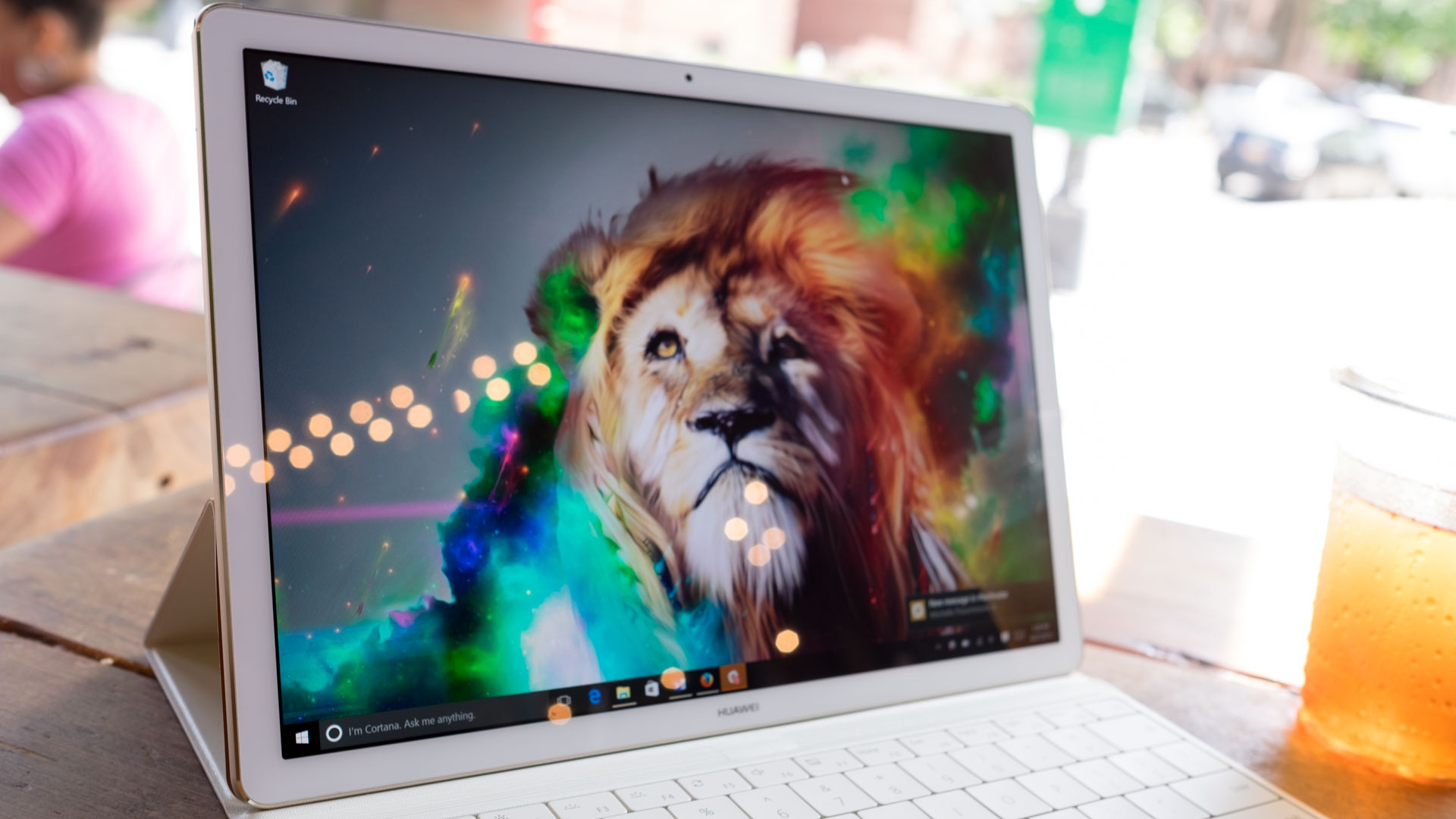
Screen and speakers
The high point of the Huawei MateBook is its screen. Not only is the display of a higher-resolution that of its competitors, it also offers some of the narrowest bezels on any tablet and stunning image quality. Colors pop while pixels render many different layers and levels of contrast.
You won't find the deepest blacks here and if that's what you seek you should look into the Samsung TabPro S and its Super AMOLED display. Even the HP Spectre 13 rendered deeper blacks as I played Guardians of the Galaxy both devices side-by-side.
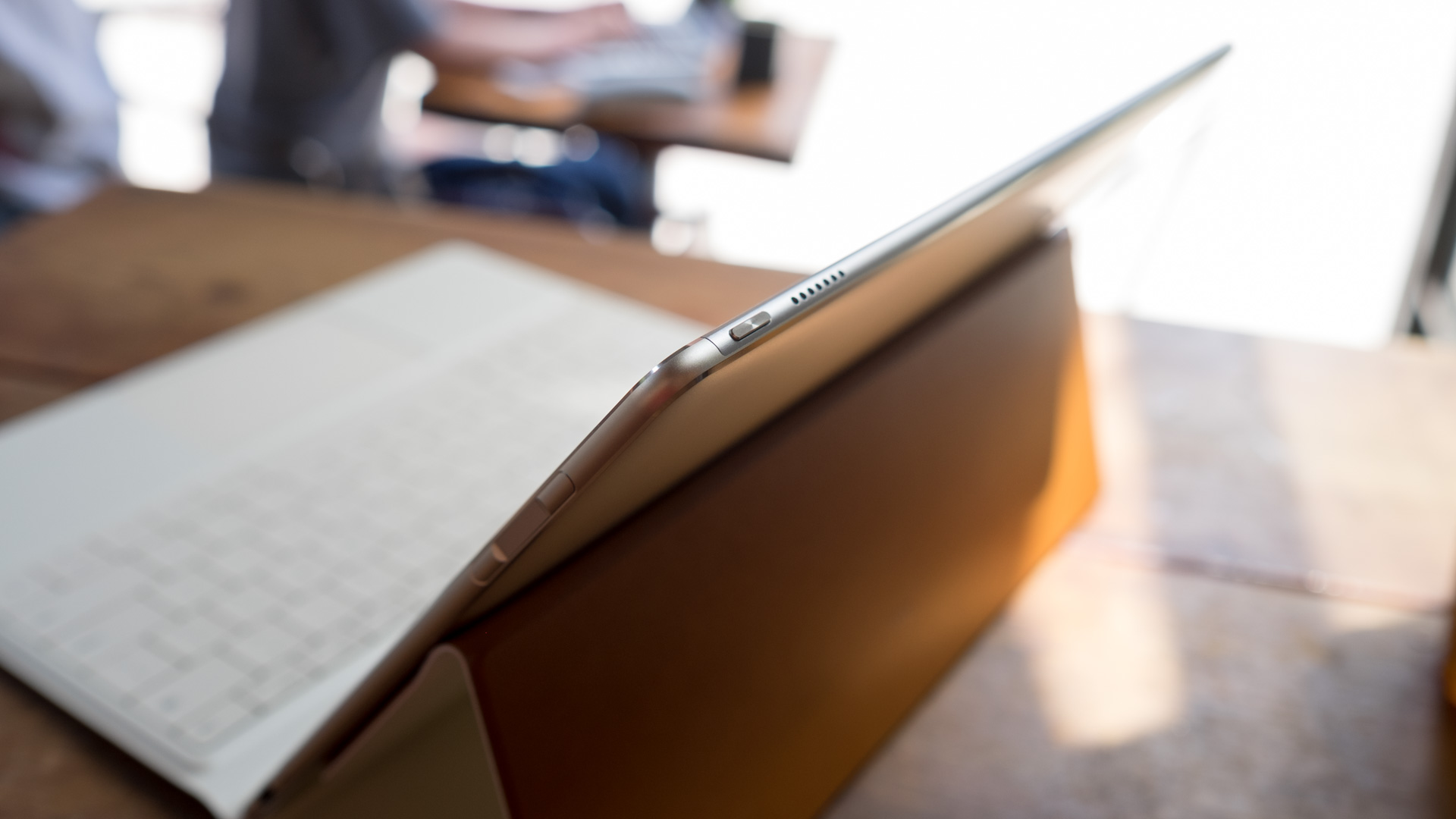
That said, nothing on the MateBook looks muddy and gray. It fine for most streaming media and unless you have the keenest eye for shades of gray, Huawei's tablet is more than excellent for viewing media.
The speakers are also surprisingly loud despite only having no more than 0.69cm of space to vibrate within. It's not the most full-bodied sound you'll find on a tablet as much of the bass gets lost in translation along with lows that drop out altogether.
Current page: Specifications, performance and features
Prev Page Introduction and design Next Page VerdictKevin Lee was a former computing reporter at TechRadar. Kevin is now the SEO Updates Editor at IGN based in New York. He handles all of the best of tech buying guides while also dipping his hand in the entertainment and games evergreen content. Kevin has over eight years of experience in the tech and games publications with previous bylines at Polygon, PC World, and more. Outside of work, Kevin is major movie buff of cult and bad films. He also regularly plays flight & space sim and racing games. IRL he's a fan of archery, axe throwing, and board games.
